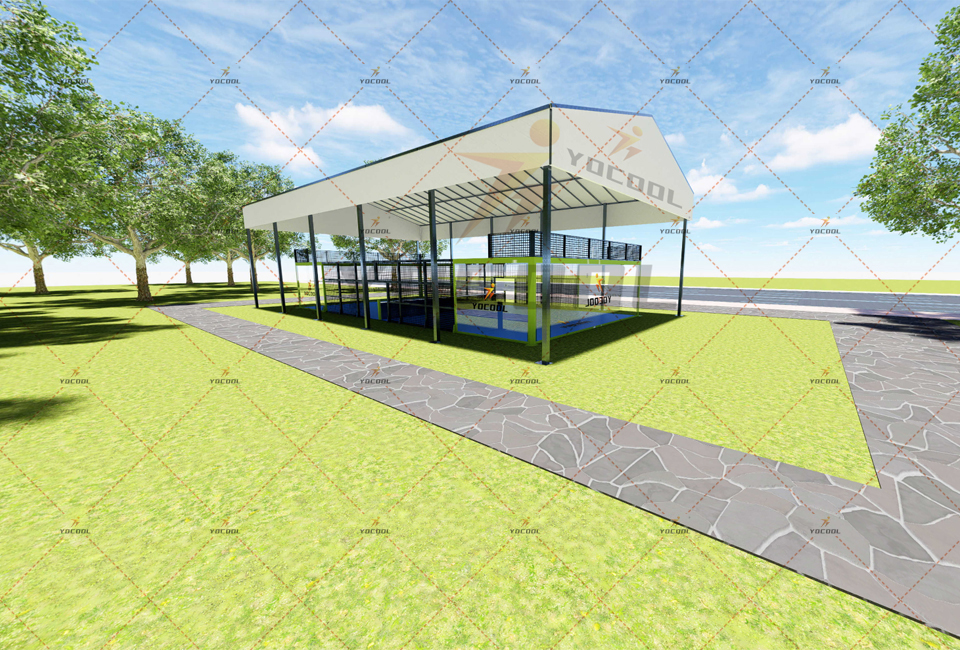

Tennis and Padel A Comparative Exploration of Two Dynamic Sports
Tennis and padel are two racquet sports that have gained immense popularity across the globe, each boasting its own unique style, rules, and culture. While both sports share common ancestral roots in racquet sports, their distinct characteristics offer different experiences for players and spectators alike. In this article, we will dive into the similarities and differences between tennis and padel, exploring their histories, playing styles, and the communities that surround them.
Historical Background
Tennis traces its origins back to the late 12th century in France, where it was played as a handball game known as jeu de paume. Over the centuries, tennis evolved into the modern game we know today, officially codified in England in the late 19th century. The sport quickly gained traction due to its incorporation into social events and tournaments, culminating in prestigious tournaments like Wimbledon and the US Open.
Padel, on the other hand, is a relatively recent invention, emerging in Mexico in 1969. Created by Enrique Corcuera, padel was designed to combine elements of tennis and squash. The sport spread rapidly to Spain and Argentina, where it became highly popular, particularly in the 1980s. Today, padel has expanded significantly, with professional associations and tournaments appearing worldwide, contributing to its rise as a mainstream sport.
Playing Styles and Court Dynamics
Both tennis and padel are played with racquets, but they differ considerably in terms of court layout and gameplay. A standard tennis court measures 78 feet long and 36 feet wide for doubles matches, with high nets separating the two sides. Players engage in rallies, serving the ball from behind the baseline and attempting to outmaneuver their opponents.
Padel courts are notably smaller, measuring about 66 feet in length and 33 feet in width, and are enclosed by walls. This enclosure allows players to use the walls to their advantage, similar to squash. The underhand serve in padel is less about power and more focused on placement and strategy, as players must think creatively to use the walls effectively. As a result, padel tends to foster longer rallies with strategic shot placement, whereas tennis is often characterized by explosive serves and powerful baseline play.

Community and Culture
The communities surrounding tennis and padel reveal much about the culture of each sport. Tennis has a long-established presence, with a rich history filled with iconic players such as Serena Williams, Roger Federer, and Rafael Nadal. The sport exudes a sense of tradition and prestige, often associated with elegant attire, private clubs, and formal tournaments.
In contrast, padel is often viewed as a more accessible and social sport. The smaller court size and doubles format make it easier for people of all skill levels to participate. The atmosphere surrounding padel is typically more relaxed and informal, attracting diverse groups, from families to social clubs. Many players appreciate padel for its emphasis on camaraderie, as matches can foster a sense of community and connection among players.
Health Benefits and Popularity
Both tennis and padel offer a wealth of health benefits, making them excellent choices for physical activity. Regular participation in either sport can improve cardiovascular fitness, enhance coordination, and develop strength and flexibility. The social aspect of both sports also contributes to mental well-being, as players enjoy the camaraderie and friendly competition they foster.
The rise of padel can be attributed to its rapid growth in popularity, particularly in Europe and South America. Its accessibility and shorter playtime make it appealing to a broader audience, including younger generations. As more padel courts are constructed and clubs emerge, the sport's visibility continues to expand, bringing new players into the fold.
Conclusion
In conclusion, tennis and padel, while unique in their own right, share a common goal to deliver enjoyable and engaging experiences for players and fans alike. Whether one prefers the elegance and tradition of tennis or the fun and sociability of padel, both sports contribute to a rich tapestry of athletic competition and community. As these sports continue to evolve, they promise to keep attracting enthusiasts and creating memories on and off the court.
Homogeneous Transparent Floors Durable, Non-Slip Rubber Flooring
Rubber Floor Mats & Tiles Durable, Slip-Resistant Flooring Solutions
Rubber Composite Flooring Slip-Resistant & Eco-Friendly Mats
Durable Rubber Floor Mats Slip-Resistant & Easy Clean Solutions
Durable Rubber Floor Mats - Slip-Resistant & Heavy-Duty Protection
Durable PVC & Rubber Sports Floors Shock-Absorbing & Slip-Resistant